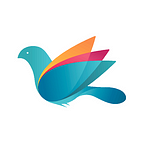What’s new in Flutter 2.5? New Features in Google’s Flutter 2.5
( Image source)
In the past, many developers faced issues with running Flutter apps in full-screen modes on Android devices. The tech geniuses of Flutter have incorporated four significant features to enhance full-screen functionality.
When users engage with the apps, the developers can write a new code to return to the full screen immediately or perform other actions on their device.
The names of the new modes are incredibly intriguing & their functions are even better! Here are the four modes of Android Full-screen in Flutter 2.5:
- Lean Back: This allows you to see the system displays by tapping anywhere on the screen.
- Sticky Immersive: you can see the system overlays by swiping your screen’s edge with this functionality.
- Immersive Sticky: This allows the framework to handle the swipe efficiently.
- Edge-to-Edge: It displays application elements behind translucent system UI overlays.
3. ‘Material You’ Upgrades
Along with Android’s full-screen enhancements, Flutter’s latest update has also introduced early support for Google’s revised design language ‘Material You.’ Material design’s latest version is equipped with new themes, forms,
and color effects. There are significant updates in terms of functionality in Material Design which includes -
- Upgraded floating action button size & theming.
- Improvements in the scroll metrics notification.
- Advanced upgrades in the ScaffoldMessenger that was introduced in Flutter 2.0. Along with bottom SnackBars, you can now add top banners to your scaffold.
- Enhanced text editing shortcuts.
4. Camera, Image Picker & Plus Plugins
Another plugin that has been improved substantially with the new Flutter version is ‘camera plug-in.’ The robustness and functionality of image_picker are refined for Android devices.
Moreover, you will also witness that an earlier camera_plugin is now compatible with web devices. However, it is not an endorsed plugin, so your Flutter development team might have to add it manually in the web application. This version allows basic camera support through the internet like viewing camera preview, capturing images, zoom control, flash, etc.
5. Flutter DevTools Enhancements
This release of Flutter is equipped with several enhancements in the Flutter DevTools, which has proven to be a boon for developers.
( Image source)
These updates allow businesses to achieve maximal outputs when they Hire Flutter Developers since the developers can now deliver better results. Significant features
of Flutter DevTools improvements include-
- Better detection of UI performance issues, including slower frame times.
- Jank detection warnings.
- Ability to diagnose shader compilation errors in the timeline, which ultimately helps in eliminating shader compilation jank.
- One of the best upgrades in Flutter 2.5 is the addition of ‘CPU Profiler.’ It eliminated the need to transfer data from native codes, Dart VM, and Flutter libraries while analyzing CPU performance issues.
- The inclusion of ‘Widget Inspector Console’ is designed to make detecting ‘widget properties’ easier. With this, when you select a widget, the console will activate automatically and allow you to explore all its properties.
6. IntelliJ/Android Studio
Another plugin that has undergone massive changes is ‘IntelliJ/Android Studio.’
Fortunately, Flutter 2.5.0 includes this great functionality that enables experts to perform unit and integration testing with a simple “testWidgets()” command. This makes it easier for them to generate complete coverage test reports.
Another function that has impressed several Cross-platform app development experts is the most powerful plugin that displays coverage information for unit and integration test runs.
There are ample other improvements to the IntelliJ/Android Studio plugin for Flutter detailed in the release notes:-
7. Release Of Pigeon 1.0
If you are interested in Plugin development, the launch of pigeon 1.0 might be highly beneficial for you. It is an advanced tool for generating typesafe interop code between native and Flutter platforms.
It lets you specify the API for your plugin and generate skeleton code in Dart, Java, and Objective-C.
Pigeon is already gaining popularity in Flutter app development. With the improvements like powerful error messages, added support for generics, etc., we can expect it to be used extensively in the future.
8. Dart 2.14
One of the primary contributors to Flutter’s exponential success is its easy-to-use and dynamic coding language, i.e., Dart. To make coding even more efficient, Google has refined the features of Dart and released its new version, 2.14. Let us have a
look at what’s new with Dart’s latest version:
( Image source)
- Apple silicon support.
- Addition of new pub. ignore file support that allows you to list the documents you do not want to publish to the pub. dev in the same format as .gitignore files.
- New .pub ignore file support has been added to list the files you don’t want to upload to pub.dev with the same format.
- Improved memory management.
- Development with the 2.14 version of Dart will be much faster and efficient.
Conclusion
Thanks to the community of Flutter developers worldwide for their contribution to the innovation of unique features in Flutter 2.5.
Google is working continuously to revolutionize the app development process so that businesses and entrepreneurs can conclude their app development projects faster and derive optimal results from their apps.
We hope that this article will help you understand what’s new in Flutter 2.5. Being well-acquainted with this information, you will be able to know why ‘Flutter’ is ahead of the curve in cross-platform development.
Looking to Hire Flutter Developers? Contact ZealousWeb today. For more information on Flutter 2.5, reach out to us in the comments section below.
Originally published at https://www.zealousweb.com on October 22, 2021.
